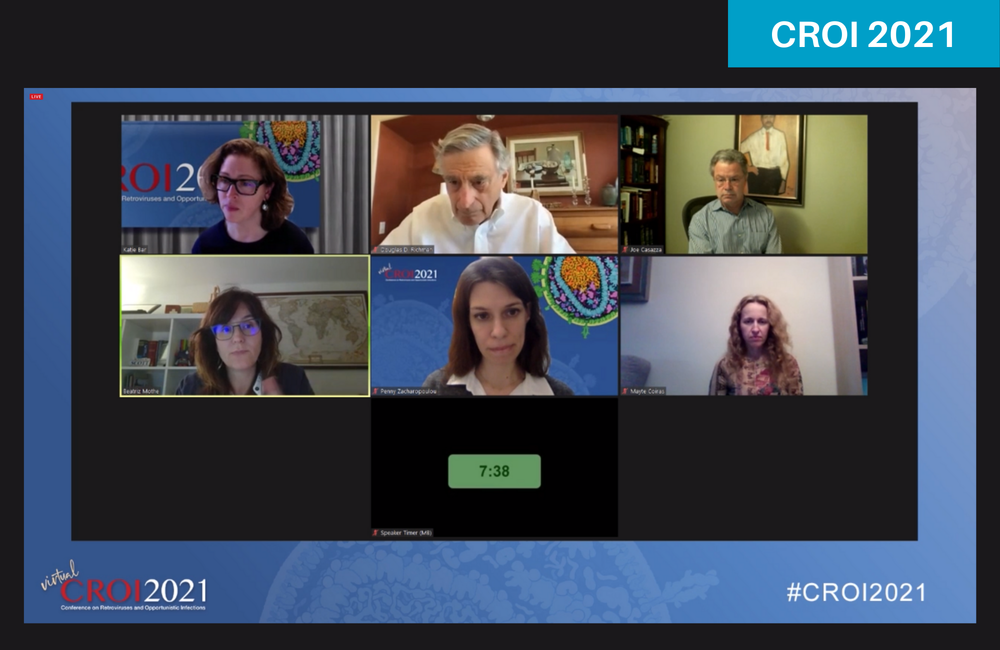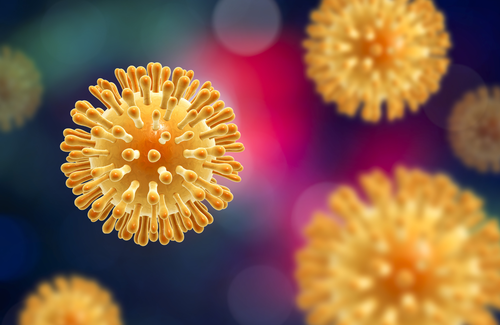
A therapeutic vaccine allowed some people with HIV to interrupt treatment for at least 22 weeks and maintain very low viral load, Dr Beatriz Mothe of the IrsiCaixa Institute for AIDS Research, Badalona, Spain, told the virtual Conference on Retroviruses and Opportunistic Infections (CROI 2021) today.
Therapeutic vaccines against HIV are designed to produce HIV-specific immune responses that can control the virus after the interruption of antiretroviral treatment. They are being investigated as part of treatment strategies designed to bring about a 'functional cure' – indefinite HIV suppression without antiretroviral treatment.
HIV control without antiretroviral therapy is rare but researchers have identified a group of people they call 'elite controllers' who have controlled HIV for long periods below the limits of detection, without needing treatment. Ultimately, many elite controllers experience progression of HIV disease and very few maintain suppression indefinitely.
What gives elite controllers the capacity to control HIV? Studies of the immune systems of elite controllers have identified CD4 and CD8 cell immune responses to specific regions of HIV that are associated with viral control. Changes in these regions undermine the ability of the virus to replicate, so they tend to vary little between viruses, making them a reliable target for vaccine-induced T-cell responses.
The HTI therapeutic vaccine is designed to stimulate T-cell responses to these regions, or epitopes. The epitopes were selected after studying immune responses in around 1000 people with HIV.
Mothe presented results of the AELIX-002 phase I/IIa safety trial of the vaccine in people with HIV. Trial participants had begun antiretroviral treatment less than six months after HIV acquisition and had undetectable viral load for at least one year and a CD4 count above 400 for at least six months.
In stage 1 of the study, 45 participants were randomised to receive a vaccination regimen of three doses of the HTI immunogen delivered by a DNA vector at week 0, 4 and 8, followed by two doses of the HTI immunogen in a MVA vector at week 12 and 20, or placebo vaccinations.
Thirty-four weeks after the last vaccination in stage 1, participants were invited to receive another vaccine, the HTI immunogen delivered in a modified chimpanzee adenovirus vector (similar to the type of vector used in the Oxford / Astra-Zeneca COVID-19 vaccine) in two doses twelve weeks apart, followed by the MVA vaccination used in the first phase again at week 24.
At week 32 of the second phase, participants were invited to interrupt treatment for 24 weeks to assess the impact of vaccination on viral control. Viral load and CD4 counts were monitored weekly during the interruption. If viral load rose above 100,000 at any point or rose above 10,000 for more than 8 weeks, or the CD4 count fell below 350 twice in a row, treatment was resumed immediately. Any symptoms resembling acute HIV infection would also trigger resumption of treatment.
The study recruited 45 participants (30 in the vaccine arm, 15 in the control arm), all but one male, who had started treatment approximately two months after acquiring HIV and who had undetectable viral load for just over two years in the vaccine group and 18 months in the placebo group.
Vaccination produced mild to moderate systemic side-effects in more than half of participants in both the vaccine group and the placebo group; only muscle pain was more common in the vaccine group.
After vaccination, participants in the vaccine group showed strong immune responses on ELISPOT testing to the peptides contained in the HTI vaccine, to such an extent that these formed the dominant HIV-specific responses by the time of treatment interruption. The vaccinated group also developed responses to a broad range of HIV proteins in the vaccine.
Forty-one participants opted to undergo treatment interruption. Viral load rebounded in all participants, usually within two to three weeks of stopping treatment but did not rebound to pre-treatment levels in the majority of participants.
Looking at responses in participants without HLA class 1 alleles (genetic profile) favourable to HIV control (32 participants), eight participants were able to stay off treatment until week 22. Six were still off treatment at week 24 in the vaccine arm (two resumed at this point due to COVID-19) compared to one in the placebo arm. Five vaccine recipients and one placebo recipient maintained viral load below 2000 during the treatment interruption.
The health implications of prolonged viral control at low but detectable levels are unclear, and the ultimate aim of functional cure studies is to maintain HIV levels below the limit of detection without treatment, in order to minimise any long-term harm caused by low-level virus replication and to prevent HIV transmission.
One participant with low-level viraemia opted to resume treatment in the study because he was concerned about his risk of transmitting HIV.
A further study, looking at the use of the TLR-7 agonist vesatolimod alongside the vaccination regimen, is currently recruiting volunteers in Spain. HTI vaccine developer Aelix Therapeutics is working with Gilead Sciences to explore combination cure regimens that include a therapeutic vaccine.
"The data presented in the AELIX study is an exciting step forward to HIV cure research," commented Professor Adeeba Kamarulzaman, President of the International AIDS Society and Director of the Centre of Excellence for Research in AIDS (CERIA) at the University of Malaya.
"The level of viral control off ART was not as strong as our long-term goal in HIV cure studies, where we are aiming to achieve a viral load < 200 c/ml in the absence of ART. However, the beneficial effect of immunisation on controlling viral load was clear and represents the first proof of concept in people living with HIV that stimulation of HIV-specific T-cells can contribute to cure strategies," she said.
“I think the study has convincingly shown that the HTI vaccines can generate immune control; it is clear that they should be considered as a backbone for future HIV cure eradication trials,” said Professor Sharon Lewin, director of the Peter Doherty Institute for Infection and Immunity and professor of medicine at the University of Melbourne.
Bailon L (Mothe B presenting) et al. A placebo-controlled ATI trial of HTI vaccines in early treated HIV infection. Virtual Conference on Retroviruses and Opportunistic Infections, abstract 161LB, 2021.
Download the abstract eBook from the conference website.
Update: Following the conference presentation, this study was published in a peer-reviewed journal:
Bailon L et al. Safety, immunogenicity and effect on viral rebound of HTI vaccines in early treated HIV-1 infection: a randomized, placebo-controlled phase 1 trial. Nature Medicine, 28: 2611–2621, 2022.
https://doi.org/10.1038/s41591-022-02060-2

